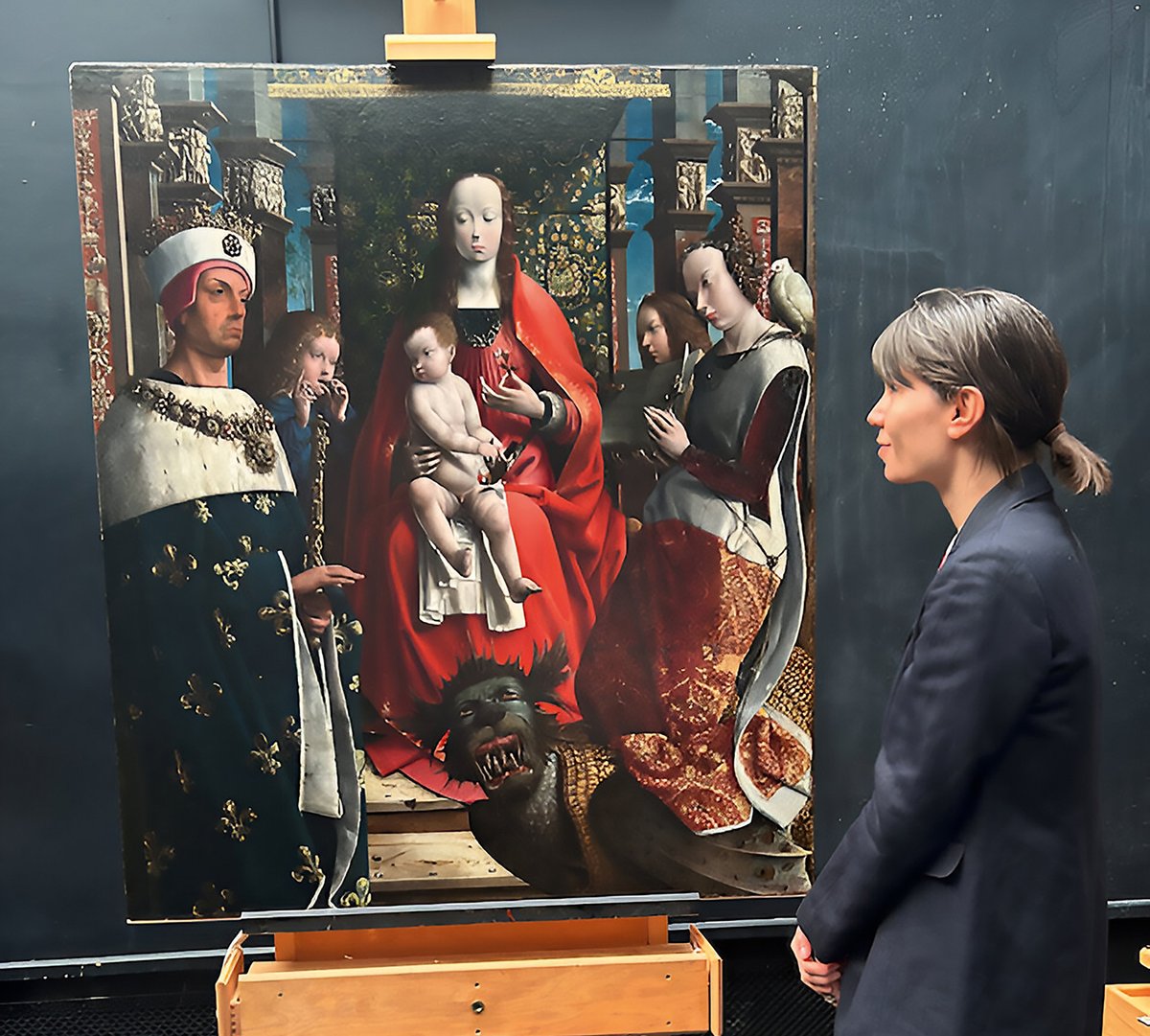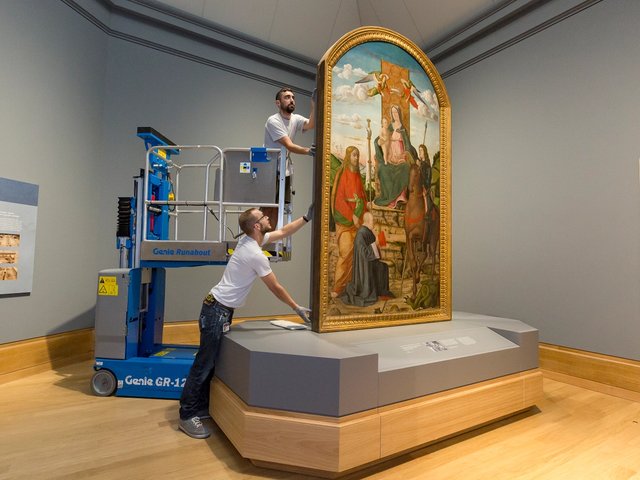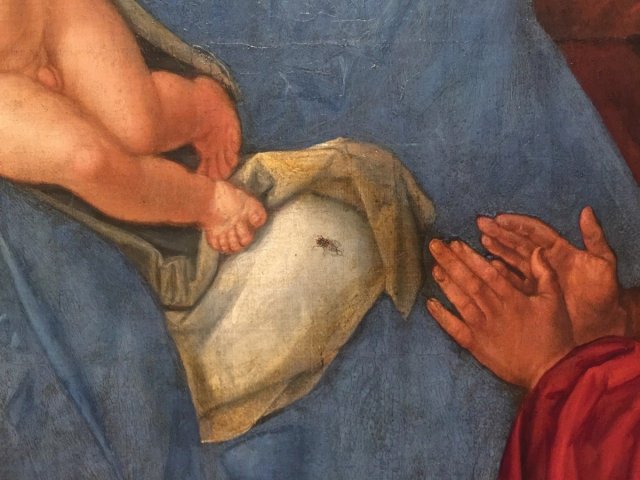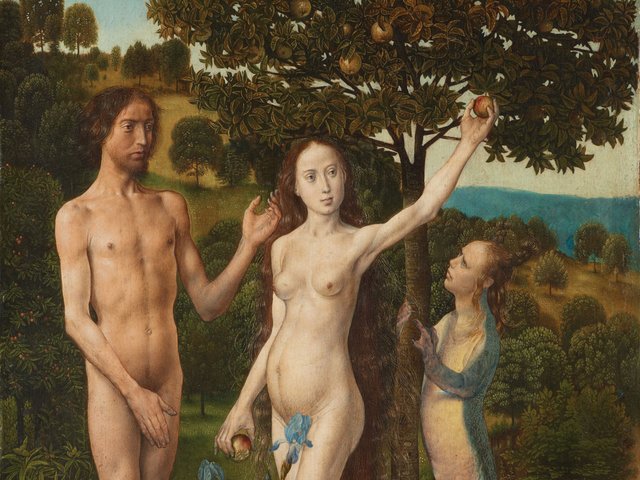The National Gallery is celebrating its bicentenary with the acquisition of a most mysterious painting, an altarpiece with the Virgin and Child and two saints, dating from 1500-10. Although the subject matter is common, the iconography reveals that it was produced by an artist with a sense of humour. Not only do we not know the name of this master, but it is even unclear whether the artist was Netherlandish (from the Low Countries) or French.
The Virgin and Child with Saints Louis and Margaret and Two Angels was bought for just over $20m (around £16m at the time), funded by the American Friends of the National Gallery London. This represents a huge sum for a European painting by a totally unknown and unnamed artist, a reflection of its quality and importance. The acquisition was arranged through Sotheby’s as a private sale.
The altarpiece was sold by a descendant of the family of Henry Blundell (1724-1810) and was until recently kept in Dorset, on the Lulworth Estate, home of the related Weld family. By 1803 the work had probably been bought by Blundell from the urban refuge of the abbey of Tronchiennes in Ghent, Belgium, where it was recorded in 1602. The altarpiece was probably originally commissioned for the refuge’s church, although this remains speculation.
Gabriele Finaldi, the director of the National Gallery, tells The Art Newspaper that his predecessors had had their eye on the altarpiece “for decades”. It was finally acquired earlier this year.
The altarpiece was last exhibited in 1960 and The Art Newspaper is now publishing it in colour for the first time. It has recently been shown privately to a dozen specialists, but there is no agreement on the identity of the artist. No other works by the same hand are known.
Names that have been proposed in the past include Jan Gossaert, Aert Ortkens, Jean Hey, the Master of Saint Giles, and followers of Hugo van der Goes or Juan de Flandes. Whoever it was appears to have been influenced by the composition of Jan van Eyck’s Virgin and Child with Canon Joris van der Paele (1434-36, in the Groeninge Museum, Bruges, formerly in a Bruges church).
The art historian Denys Sutton described the altarpiece in the 1950s as “one of those delectable items that defies the ingenuity of scholars”. It remains just as much a puzzle today.
Emma Capron, the National Gallery curator responsible for the new acquisition, believes that the altarpiece is most likely Netherlandish, but could be French. It is painted on a Baltic oak panel, used frequently in the Low Countries, whereas French artists tended to use local oak. However, Saint Louis in the work represents the French king Louis IX (1214-70) and in the painting his gown is decorated with the royal fleur-de-lis.
The composition is centred around the Virgin and Child. Jesus turns away from a goldfinch, symbol of his martyrdom, holding its wings in what appears to be a cruel grip. Legend has it that the bird’s red spot was acquired when it removed a thorn from Christ’s head on the way to Calvary.
The figure of Saint Louis almost certainly has the facial features of an unidentified donor of the altarpiece, right down to the scar on his cheek. The right-hand figure represents an idealised depiction of Saint Margaret, the patron saint of expectant mothers. Unusually, she has a dove on her shoulder, an allusion to a little-known account of her miraculous crowning by a bird that descended from heaven.
The composition’s dominating feature is the slobbering dragon. The grimacing beast is ferocious, with hairy fangs and extended ears. It appears to cry out in pain. No other dragon quite like this is known in Northern European art. Saint Margaret rises unharmed from the scaly dragon she has just defeated. The placid Virgin is flanked by two angels. The one on the left plays the Jew’s harp (a small mouth harp), an unusual instrument in late Medieval iconography. The other holds a sheet of music. Although the melody was once thought to be by the English composer Walter Frye, it is now realised that the musical annotations are meaningless.
Another unusual element is the presernce of nail studs on the carefully painted bare wooden steps (studs that would have been impractical, since they would have damaged shoes and represented a trip hazard). The nails are probably there to allude to the Cross, and the Christ Child’s eventual crucifixion.
Old Testament scenes
Less obvious (and difficult to see in reproductions) are the small decorated capitals that top the pilasters. They include commonly depicted episodes from the Old Testament, such as Adam and Eve, alongside obscure and bawdy subjects. In the upper-right corner there is a scatological depiction of a putto farting. Although such vignettes are sometimes found as marginalia in Medieval manuscripts, they are rare in paintings. As Capron concludes, the artist was “wildly inventive”, creating a composition “full of iconographical oddities”.
Standing 1.2m high, the altarpiece has just been subjected to a comprehensive examination and conservation. Dendrochronology has dated the felling of the oak tree of the panel to 1483, which, accounting for the seasoning of the wood, suggests a date for the painting of soon after 1500. That fits in perfectly with stylistic and compositional elements for dating the altarpiece to 1500-10. The panel had its cradle removed and was given a flexible support to provide stability. Areas of loose paint have been stabilised and numerous small losses along the panel joints have been disguised using reversible paint. Larry Keith, the National Gallery’s head of conservation, says that the altarpiece is in “extremely good condition, considering its age and size”.
Finaldi admits that it is “very rare” to have an unattributed painting of this quality. He speculates that “it might have been painted by a highly talented artist early in his career or by someone who died young”.
Hopefully now that the work is in public ownership and easily accessible, specialists will be able to seek a consensus on the attribution. If this fails, then perhaps the painting could be labelled as by the “Master of the National Gallery Virgin and Child”. The altarpiece will be unveiled in Room 53 on 10 May.





